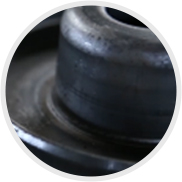 Afrikaans
Afrikaans  Albanian
Albanian  Amharic
Amharic  Arabic
Arabic  Armenian
Armenian  Azerbaijani
Azerbaijani  Basque
Basque  Belarusian
Belarusian  Bengali
Bengali  Bosnian
Bosnian  Bulgarian
Bulgarian  Catalan
Catalan  Cebuano
Cebuano  Corsican
Corsican  Croatian
Croatian  Czech
Czech  Danish
Danish  Dutch
Dutch  English
English  Esperanto
Esperanto  Estonian
Estonian  Finnish
Finnish  French
French  Frisian
Frisian  Galician
Galician  Georgian
Georgian  German
German  Greek
Greek  Gujarati
Gujarati  Haitian Creole
Haitian Creole  hausa
hausa  hawaiian
hawaiian  Hebrew
Hebrew  Hindi
Hindi  Miao
Miao  Hungarian
Hungarian  Icelandic
Icelandic  igbo
igbo  Indonesian
Indonesian  irish
irish  Italian
Italian  Japanese
Japanese  Javanese
Javanese  Kannada
Kannada  kazakh
kazakh  Khmer
Khmer  Rwandese
Rwandese  Korean
Korean  Kurdish
Kurdish  Kyrgyz
Kyrgyz  Lao
Lao  Latin
Latin  Latvian
Latvian  Lithuanian
Lithuanian  Luxembourgish
Luxembourgish  Macedonian
Macedonian  Malgashi
Malgashi  Malay
Malay  Malayalam
Malayalam  Maltese
Maltese  Maori
Maori  Marathi
Marathi  Mongolian
Mongolian  Myanmar
Myanmar  Nepali
Nepali  Norwegian
Norwegian  Norwegian
Norwegian  Occitan
Occitan  Pashto
Pashto  Persian
Persian  Polish
Polish  Portuguese
Portuguese  Punjabi
Punjabi  Romanian
Romanian  Russian
Russian  Samoan
Samoan  Scottish Gaelic
Scottish Gaelic  Serbian
Serbian  Sesotho
Sesotho  Shona
Shona  Sindhi
Sindhi  Sinhala
Sinhala  Slovak
Slovak  Slovenian
Slovenian  Somali
Somali  Spanish
Spanish  Sundanese
Sundanese  Swahili
Swahili  Swedish
Swedish  Tagalog
Tagalog  Tajik
Tajik  Tamil
Tamil  Tatar
Tatar  Telugu
Telugu  Thai
Thai  Turkish
Turkish  Turkmen
Turkmen  Ukrainian
Ukrainian  Urdu
Urdu  Uighur
Uighur  Uzbek
Uzbek  Vietnamese
Vietnamese  Welsh
Welsh  Bantu
Bantu  Yiddish
Yiddish  Yoruba
Yoruba  Zulu
Zulu High-Quality Conveyor Components for Enhanced Performance and Efficiency
Superior Conveyor Components Enhancing Efficiency and Reliability in Material Handling
In today's fast-paced industrial landscape, efficient material handling is crucial for the success of any business. Among the myriad of systems designed to optimize this process, conveyor systems stand out due to their ability to streamline operations and improve productivity. At the heart of these systems are superior conveyor components, which play a vital role in ensuring reliability, efficiency, and longevity.
Conveyor components include various parts such as belts, rollers, pulleys, and drives. Each component serves a specific purpose in the overall functionality of the conveyor system. The quality and design of these components significantly affect the performance of the conveyor, thereby impacting the entire production line.
One of the most critical aspects of conveyor components is the belt. Conveyor belts are responsible for transporting materials from one point to another. Superior conveyor belts are designed with high-quality materials that provide durability, resistance to wear and tear, and exceptional load-carrying capacity. Innovations in belt design, such as modular belts, have also emerged, allowing for greater flexibility and easier maintenance. By employing specialized materials like rubber, PVC, or polyurethane, manufacturers can ensure that their belts operate efficiently in various environments, including those subjected to extreme temperatures or heavy loads.
Another essential component is the roller. Rollers facilitate smooth movement and reduce friction, thus enhancing the overall efficiency of the conveyor system. Superior conveyor rollers are typically constructed of high-strength materials that can withstand heavy loads while providing durability and longevity. Furthermore, advanced designs, such as self-aligning rollers and crowned rollers, help maintain the proper belt tracking, preventing costly downtime caused by misalignment.
superior conveyor components

Pulleys and drives are equally important. They help in the transmission of power within the conveyor system. Superior pulleys are engineered to withstand high tensions and prevent slippage, ensuring that the conveyor operates smoothly. The integration of highly efficient drive systems can significantly reduce energy consumption while maximizing output. Electric motors, for example, have been engineered to provide variable speeds and torque, allowing for precise control over the conveyor operation.
Additionally, advancements in technology have led to the incorporation of smart features in conveyor components. Monitoring systems equipped with sensors can provide real-time data on conveyor performance, enabling predictive maintenance. This proactive approach helps identify potential issues before they lead to system failures, thereby reducing downtime and maintenance costs.
The importance of selecting superior conveyor components cannot be overstated. High-quality components result in lower overall operational costs by minimizing maintenance needs and extending the lifespan of the system. Industries such as manufacturing, logistics, and food processing increasingly rely on these components for their material handling systems. As businesses strive for greater efficiency, the demand for high-performance conveyor systems will continue to grow.
In conclusion, superior conveyor components are fundamental to the success of modern material handling systems. By investing in high-quality belts, rollers, pulleys, and drives, businesses can ensure reliable and efficient operations. With constant innovations and advancements in materials and technology, the world of conveyor components will continue to evolve, enabling industries to meet the ever-increasing demands of production and distribution. Embracing these superior components is not just a choice but a necessity for any business aiming to enhance its operational efficiency and remain competitive in today’s market.
-
Revolutionizing Conveyor Reliability with Advanced Rubber Lagging PulleysNewsJul.22,2025
-
Powering Precision and Durability with Expert Manufacturers of Conveyor ComponentsNewsJul.22,2025
-
Optimizing Conveyor Systems with Advanced Conveyor AccessoriesNewsJul.22,2025
-
Maximize Conveyor Efficiency with Quality Conveyor Idler PulleysNewsJul.22,2025
-
Future-Proof Your Conveyor System with High-Performance Polyurethane RollerNewsJul.22,2025
-
Driving Efficiency Forward with Quality Idlers and RollersNewsJul.22,2025





























